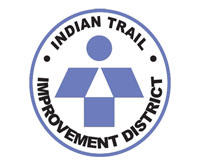The Indian Trail Improvement District Board of Supervisors heard reports from several department managers Wednesday, Sept. 20 on how the district fared during Hurricane Irma.
Acreage canals handled the rain from Hurricane Irma well, with no flooding reported from the storm. Private residences had little damage, although numerous trees were blown down, with a few blocking roads until ITID crews got them cleared.
Director of Operations & Maintenance Rob Robinson said ITID buildings had no structural damage from the storm.
“Paved roads were blocked by downed trees and utility lines, but received no visible asphalt damage,” Robinson said. “Some roadway signs were damaged, but no traffic lights were down.”
Some roadways suffered minor erosion from the driving winds and rainfall, and some were completely blocked by debris from vegetation.
“Culverts and headwalls received no visible damage,” Robinson said. “Minor erosion from driving rain was evident on some of the canal banks and side slope walks. Area residents reported minor damage to roofs, sheds and barns, and falling trees. Fencing received the most damage from wind and falling trees.”
He said falling trees on canal rights of way were the most burdensome task for crews to remove, because access with machinery was limited.
“All major roadways were open for traffic at the end of the shift on Sept. 11, so by the end of the day after the hurricane, all major roadways and secondaries were open,” Robinson said. “Crews will continue to work through Friday to remove debris from secondary roadways. Sidewalks were open in time for school Monday morning. Canal debris removal will continue to take possibly several months due to limited access.”
Robinson said he has enlisted the use of a drone to get an aerial overview of some of the canals that ITID staff has limited access to, and come up with a plan to get rid of the debris.
Director of Stormwater Operations Greg Shafer said his staff went to work on Monday, Sept. 4, immediately after the governor declared a state of emergency.
“We understood the storm was huge at that point, so we didn’t take any chances,” Shafer said. “We started drawing down at once. Because of advance notice, we were already at wet season control level.”
He said they were able to bring down most of the water by gravity flow, with little use of pumps.
“I did do some pumping in the upper basin because of Corbett,” he said, referring to the J.W. Corbett Wildlife Management Area. “Some of their waters were released into ours.”
Shafer said the district has five rain collectors, all of which had more than 7 inches of rain in them.
“Typically, in high winds, the rain doesn’t come straight down,” he said. “You can say some areas got more than 7 inches of rain, some well over.”
All of the canals were drawn down to about 14.5 feet, and the morning after the storm, they were all over 18 feet, Shafer said. “They were right at the top of the canals,” he said. “We’re lucky we didn’t get any more, because there probably would have been a flood.”
Shafer said that as soon as it was safe, they immediately began another drawdown to wet season control levels.
“Currently, in our lower basin, we’re already there. The upper basin is under a half a foot [from control level]. Again, that’s the Corbett area,” he said. “They’re releasing water, and we’re adjusting.”
Throughout the storm, Shafer said ITID staff had close communication with South Florida Water Management District officials and others from West Palm Beach, Corbett and the Seminole Improvement District.
“We did very well through this hurricane,” he said.
ITID President Jennifer Hager said maintaining communication with other government entities was a huge step forward. “I’m very happy with that,” she said.








